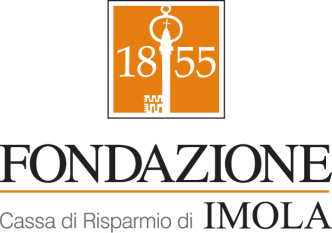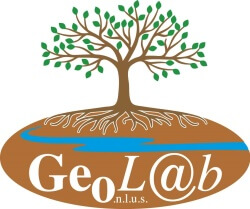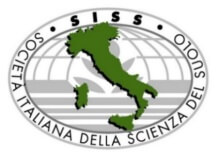Effects of organic carbon loading on microalgal growth and community dynamics in photobioreactors
DOI:
https://doi.org/10.60923/issn.2281-4485/22664Keywords:
Organic carbon, Chlorophylla, Green algae, Photosynthesis, Wastewater treatmentAbstract
This study investigates the impact of varying organic carbon loads on the growth, composition, and productivity of microalgae in controlled photobioreactor systems. Three laboratory-scale bioreactors were operated with synthetic wastewater containing different concentrations of Carbon (100, 400, and 800 mgL-1), while maintaining consistent nitrogen and phosphorus inputs. Parameters monitored included pH, chlorophyll a, total suspended solids (TSS), volatile suspended solids (VSS), and microalgal community composition. Microscopic analysis revealed that moderate glucose concentrations (100–400 mgL-1) favored the proliferation of Scenedesmus sp and Chlorella sp, while excessive organic carbon input (800 mgL-1) led to a decline in species diversity and overall algal biomass. Statistical analysis confirmed significant variations in pH, chlorophyll a, TSS, and VSS across treatments, with bioreactor A showing the highest values of algal productivity and pH due to optimal photosynthetic activity. The results demonstrate that moderate organic carbon enrichment enhances algal growth and trophic complexity, while excessive organiccarbon suppresses phytoplankton development, likely due to microbial competition and acidification. These findings provide valuable insights for optimizing organic carbon inputs in algal-based wastewater treatment and ecological restoration strategies.
References
ASHFAQ A., ASHRAF S.S. (2024) Harnessing microalgae: Innovations for achieving UN Sustainable Development Goals and climate resilience. Journal of Water Process Engi-neering, 68:106506. https://doi.org/10.1016/j.jwpe.2024.106506
AZOV Y. (1982) Effect of pH on inorganic organic carbon uptake in algal cultures. Applied and Environmental Microbiology, 43(6): 1300–1306. https://doi-org/10.1128/aem.43.6.1300-1306.1982
BALISACAN L.G., FRANCO P.F.R., AGUINALDO H. A., BATUYONG M.A.R., HERNANDO-PAGALING A. G. (2025) Culture studies of phytoplankton isolated from Sumiling Dam and their bioremediation capacity in aquaculture wastewater. Letters in Applied Microbiology, 3:78(2), ovaf013. https://doi.org/10.1093/lambio/ova013
BARTLEY M.L., BOEING W.J., DUNGAN B., HOLGU-IN F.O., SCHAUB T. (2014) pH effects on growth and lipid accumulation of the biofuel microalgae Nannochloropsissalina and invading organisms. Journal of Applied Phycology, 26 (3):1431–1437. https://doi.org/10.1007/s10811-013-0177-2
CAI Y., LIU Y., LIU T., GAO K., ZHANG Q., CAO L., WANG Y., WU X., ZHENG H., PENG H., RUAN R. (2020) Heterotrophic cultivation of Chlorellavulgaris using broken rice hydrolysate as organic carbon source for biomass and pigment production. Bioresource Technology, 323: 124607. https://doi:.org/10.1016/j.biortech.2020.124607
CHAI W.S., TAN W.G., MUNAWAROH H.S.H., GUPTA V.K., HO S.H., SHOW P.L. (2021) Multifaceted roles of microalgae in the application of wastewater biotreatment: a review. Environmental Pollution, 269:116236. https://doi.org/10.1016/j.envpol.2020.116236
CHAUDHARY R., DIKSHIT A.K., DIKSHIT A.K., DIKSHIT A.K., TONG Y.W. (2018) Carbon-dioxide biofixation and phytoremediation of municipal wastewater using Chlorella vulgaris and Scenedesmus obliquus. Environmental Science and Pollution Research, 25(21):20399–20406. https://doi.org/10.1007/s11356-017-9575-3
FUSTEC E., LEFEUVRE J.C. (2000) Fonctions et valeurs des zones humides. Dunod, Paris, France, pp. 426.
ISBN 2100044338, 9782100044337
GHAEMI S. (2020) Innovative Algae-Based Heatsink System for Data Center Integration (Master's thesis, The University of Arizona).
GONZÁLEZ‐OLALLA J.M., POWELL J.A., BRAHNEY J. (2024) Dust storms increase the tolerance of phytoplan-kton to thermal and pH changes. Global Change Biology, 30(1): e17055. https://doi.org/10.1111/gcb.17055
HUANG Y., LUO L., XU K., WANG X. (2019) Characteristics of external organic carbon uptake by microalgae growth and associated effects on algal biomass composition. Bioresource Technology, 292: 121887. https://doi.org/10.1016/j.biortech.2019.121887
JAHN M., VIALÁS V., KARLSEN J., MADDALO G., EDFORS F., FORSTRÖM B., UHLÉN M., KÄLL L., HUDSON E. (2018) Growth of cyanobacteria is constrained by the abundance of light and organic carbon assimilation proteins. Cell Reports, 25(2): 478–486. https://doi.org/10.1016/j.celrep.2018.06.007
KAMOLRAT N., KAMUANG S., KHAMKET T., SANG-MEK P., SITTHAPHANIT S. (2023) The effect of optimum photoperiod from blue LED light on growth of Chlorella vulgaris in photobioreactor tank. Natural and Life Sciences Communications, 22:38. https://doi.org/ 10.12982/NLSC.2023.038
KHOO K.S., AHMAD I., CHEW K. W., IWAMOTO K., BHATNAGAR A., SHOW P.L. (2023) Enhanced microalgal lipid production for biofuel using different strategies including genetic modification of microalgae: A review. Progress in Energy and Combustion Science, 96: 101071. https://doi.org/10.1016/j.pecs.2023.101071
KIØRBOE T. (2024) Organismal trade-offs and the pace of planktonic life. Biological Reviews, 99(6): 1992-2002. https://doi.org/ 10.1111/brv.13108
KLUG J. (2002) Positive and negative effects of alloc-thonous dissolved organic matter and inorganic nutrients on phytoplankton growth. Canadian Journal of Fisheries and Aquatic Sciences, 59(1): 85–95.
https://doi.org/10.1139/f01-191
LI Y., TAO Y., WANG Q., GONG Q., GAO X. (2023) Effects of organic carbon source and pH on growth, astaxanthin accumulation and endogenous phytohormone secretion of Haematococcuspluvialis. Journal of Applied Phycology, 35: 2815–2828.
LIM Y.A., CHONG M.N., FOO S.C., ILANKOON I.M.S. K. (2021) Analysis of direct and indirect quantification methods of carbon dioxide (CO2) fixation via microalgae cultivation in photobioreactors: A critical review. Renewable and Sustainable Energy Reviews, 137: 110579. https://doi.org/ 10.1016/j.rser.2020.110579
LIU S., HAN J., YAO L., LI H., XIN G., HO S.H., HUANG X. (2024) Integrated multilevel investigation of photosynthesis revealed the algal response distinction to differentially charged nanoplastics. Journal of Hazardous Materials, 475:134815. https://doi.org/10.1016/j.jhazmat.2024.134815.
LIU Z.C., ZHAI W.D. (2025) Carbonate and isotope chemistry in the outer Yellow River Estuary and beyond: Effects of flood and cold wave on inter annual variations in coastal stable organic carbon isotope. Marine Chemistry, 269: 104486. https://doi.org/10.1016/j.marchem.2025.104486
LUCIUS S., HAGEMANN M. (2024) The primary organic carbon metabolism in cyanobacteria and its regulation. Frontiers in Plant Science, 15: 1417680. https://doi.org/ 10.3389/fpls.2024.1417680
LUDENSKY M. (2004) Microbiological Control in Cooling water Systems. In: Paulus, W. (eds) Directory of Microbi-cides for the Protection of Materials. Springer, Dordrecht. https://doi.org/ 10.1007/1-4020-2818-0_8
MA X., MI Y., ZHAO C., WEI Q. (2022) A comprehensive review on organic carbon source effect of microalgae lipid accumulation for biofuel production. Science of the Total Environment, 806: 151387. https://doi.org/10.1016/j.scitotenv.2021.151387
MAIRET F., BAYEN T. (2021) The promise of dawn: microalgae photoacclimation as an optimal control problem of resource allocation. Journal of Theoretical Biology, 515: 110597. https://doi.org/ 10.1016/j.jtbi.2021.110597
MEYER F.W., VOGEL N., TEICHBERG M., UTHICKE S., WILD C. (2015) The physiological response of two green calcifying algae from the Great Barrier Reef towards high dissolved inorganic and organic carbon (DIC and DOC) availability. PloS One, 10(8): e0133596. https://doi.org/ 10.1371/journal.pone.0133596
NAJAFABADI H.A., MALEKZADEH M., JALILIAN F., VOSSOUGHI M., PAZUKI G. (2015) Effect of various organic carbon sources on biomass and lipid production of Chlorellavulgaris during nutrient sufficient and nitrogen starvation conditions. Bioresource Technology, 180: 311-317. https://doi.org/ 10.1016/j.biortech.2014.12.076
PARK J.B.K., CRAGGS R. J. (2010) Wastewater treatment and algal production in high rate algal ponds with organic carbon dioxide addition. Water Science and Technology, 61(3): 633-639. https://doi.org/10.2166/wst.2010.951
PEREZ-GARCIA O., BASHAN Y., PUENTE M. (2011) Organic carbon supplementation of sterilized municipal wastewater is essential for heterotrophic growth and remo-ving ammonium by the microalga Chlorellavulgaris. Journal of Phycology, 47(1): 190–199. https://doi.org/ 10.1111/j.1529-8817.2011.00980.x
RANGLOVÁ K., LAKATOS G., MANOEL J.A.C., GRIVALSKÝ T., MASOJÍDEK J. (2019) Rapid screening test to estimate temperature optima for microalgae growth using photosynthesis activity measurements. Folia Microbiologica, 64(5): 615–625. https://doi.org/10.1007/s12223-019-00738-8
RAVEN J.A. (2011) The cost of photoinhibition. Physiolo-gia Plantarum, 142(1): 87–104. https://doi.org/10.1111/j.1399-3054.2011.01460.x
REDFIELD A.C. (1958) The biological control of chemical factors in the environment. American Scientist, 46(3): 230A-221.
REINL K.L., HARRIS T.D., ELFFERICH I., COKER A., ZHAN Q., DOMIS L.N.D.S., SWEETMAN J.N. (2022) The role of organic nutrients in structuring freshwater phyto-plankton communities in a rapidly changing world. Water Research, 219:118573. https://doi.org/10.1016/j.watres.2022.118573
ROSSI F., MUGNAI G., DE PHILIPPIS R. (2022) Cyano-bacterial biocrust induction: a comprehensive review on a soil rehabilitation-effective biotechnology. Geoderma, 415: 115766. https://doi.org/10.1016/j.geoderma.2022.115766
SCHUBERT N., ALVAREZ-FILIP L., HOFMANN L.C. (2023) Systematic review and meta-analysis of ocean acidification effects in Halimeda: Implications for algal organic carbonate production. Climate Change Ecology, 4: 100059. https://doi.org/10.1016/j.ecochg.2022.100059
SHENAWY E., ELKELAWY M., BASTAWISSI H., TAHA M., PANCHAL H., SADASIVUNI K., THAKAR, N. (2020) Effect of cultivation parameters and heat management on the algae species growth conditions and biomass production in a continuous feedstock photobioreactor. Renewable Energy, 148:807-815. https://doi.org/10.1016/j.renene.2019.10.109
SMITH R. (2016) The influence of organic carbon supplementation on the organic carbon metabolism of green algae. Doctoral dissertation, University of Sheffield.
TAMBAT V.S., SINGHANIA R.R., PATEL A.K., CHEN C.W., MICHAUD P., DONG C.D. (2025) Advancing sustainable astaxanthin-lipid biorefineries: Robust two-stage phytohormone-driven bioprocess in Chromochloriszofingiensis. Bioresource Technology Reports, 29: 102022. https://doi.org/10.1016/j.biteb.2025.102022
THINGSTAD T., BELLERBY R., BRATBAK G., BØRSHEIM K., EGGE J., HELDAL M., LARSEN A., NEILL C., NEJSTGAARD J., NORLAND S., SANDAA R., SKJOLDAL E., TANAKA T., THYRHAUG R., TÖPPER B. (2008) Counterintuitive organic carbon-to-nutrient coupling in an Arctic pelagic ecosystem. Nature, 455 (7211): 387–390. https://doi.org/10.1038/nature07285
TIAN L., JIANG H., SONG N., HE S., ALI F. (2022) Comparing the effects of algae and macrophyte residues' degradation on biological nitrogen fixation in freshwater lake sediments. Science of The Total Environment, 809: 151129. https://doi.org/10.1016/j.scitotenv.2021.151129
TÖPPER B., LARSEN A., THINGSTAD T.F., THYR-HAUG R., SANDAA R.A. (2010) Bacterial community composition in an Arctic phytoplankton mesocosm bloom: the impact of silicate and glucose. Polar Biology, 33: 1557-1565. https://doi.org/ 10.1007/s00300-010-0846-4
TRAVING S., ROWE O., JAKOBSEN N., SØRENSEN H., DINASQUET J., STEDMON C., ANDERSSON A., RIEMANN L. (2017) The effect of increased loads of dissolved organic matter on estuarine microbial community composition and function. Frontiers in Microbiology, 8: 351. https://doi.org/10.3389/fmicb.2017.00351
UGWUANYI E.D., NWOKEDIEGWU Z.Q.S., DADA M. A., MAJEMITE M.T., OBAIGBENA A. (2024) The role of algae-based wastewater treatment systems: A comprehensive review. World Journal of Advanced Research and Reviews, 21(02):937-949.
WIRTZ K.W., PAHLOW M. (2010) Dynamic chlorophyll and nitrogen: Carbon regulation in algae optimizes instantaneous growth rate. Marine Ecology Progress Series, 402: 81–96. https://doi.org/10.3354/meps08449
WU C., KAN J., NARALE D.D., LIU K., SUN J. (2022) Dynamics of bacterial communities during a seasonal hypoxia at the Bohai Sea: Coupling and response between abundant and rare populations. Journal of Environmental Sciences, 111: 324-339. https://doi.org/10.1016/j.jes.2021.04.013
ZHANG Y., REN L., HUAQIANG C., ZHOU X., YAO T., ZHANG Y. (2019) Optimization for Scenedesmus obliquus cultivation: the effects of temperature, light intensity and pH on growth and biochemical composition. Microbiology and Biotechnology Letters, 47(4): 614–620. https://doi.org/10.4014/mbl.1906.06005
Downloads
Published
How to Cite
Issue
Section
License
Copyright (c) 2026 Ayache Laabassi, Azzedine Fercha, Asma Boudehane, Smail Chafaa, Reguia Amat Allah Zereg, Nour El Houda Khelifi

This work is licensed under a Creative Commons Attribution 4.0 International License.









